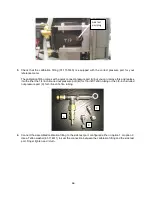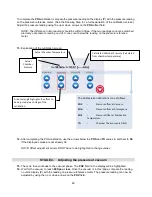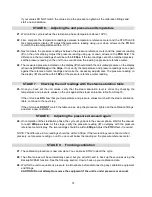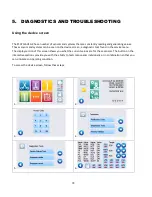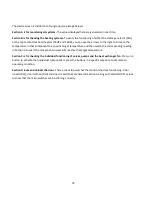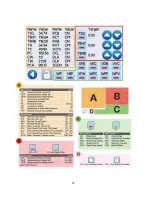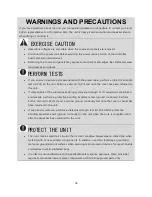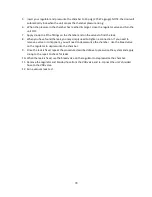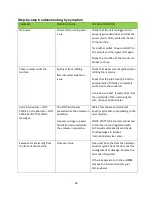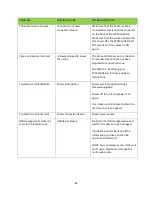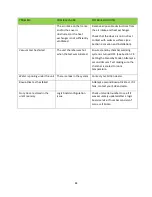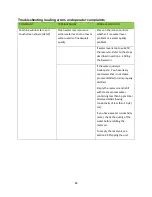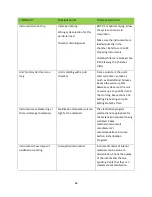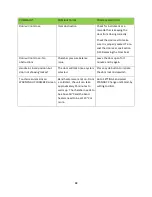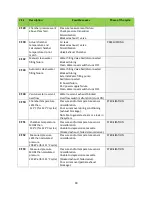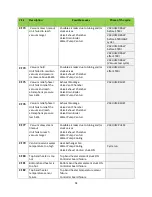
79
5.
Insert your regulator and pressurize the chamber to 25 psig (270 kPa gauge). NOTE: the door will
automatically lock when the unit senses the chamber pressure rising.
6.
When the pressure in the chamber has reached its target, close the regulator valve and turn the
unit OFF.
7.
Apply snoop to all the fittings on the chamber and on the valves to find the leak.
8.
When you have found the leak, you may simply need to tighten a connection. If you need to
remove a valve or component, you will need to depressurize the chamber. Use the bleed valve
on the regulator to depressurize the chamber.
9.
Once the leak is fixed, repeat the procedure described above to pressurize the system and apply
snoop to the repair to check for leaks.
10.
When the leak is fixed, use the bleed valve on the regulator to depressurize the chamber.
11.
Remove the regulator and braided hose from the VDB valve and re-connect the unit’s braided
hose to the VDB valve.
12.
Run a vacuum leak test.
Summary of Contents for STATCLAVE G4
Page 5: ...5 Diagram of key systems and components...
Page 6: ...6...
Page 17: ...17 Checking package contents...
Page 18: ...18 Positioning a unit Unit dimensions and operating environment...
Page 20: ...20 Direct to drain connection recommended...
Page 21: ...21 Connecting to a waste bottle...
Page 22: ...22 Connecting to the Internet Connecting to a wired network Connecting to a wireless network...
Page 23: ...23...
Page 25: ...25 Connecting an auxiliary pump...
Page 28: ...28...
Page 30: ...30 Starting and stopping a cycle...
Page 50: ...50 Registering for online access...
Page 51: ...51 First start up...
Page 52: ...52...
Page 58: ...58 Draining the unit for cleaning and shipping...
Page 61: ...61 Replacing the bacteriological filter Replacing the door seal...
Page 75: ...75...
Page 107: ...107 APPENDIX A STATCLAVE G4 plumbing diagram...
Page 108: ...108 APPENDIX B STATCLAVE G4 electrical schematic...


